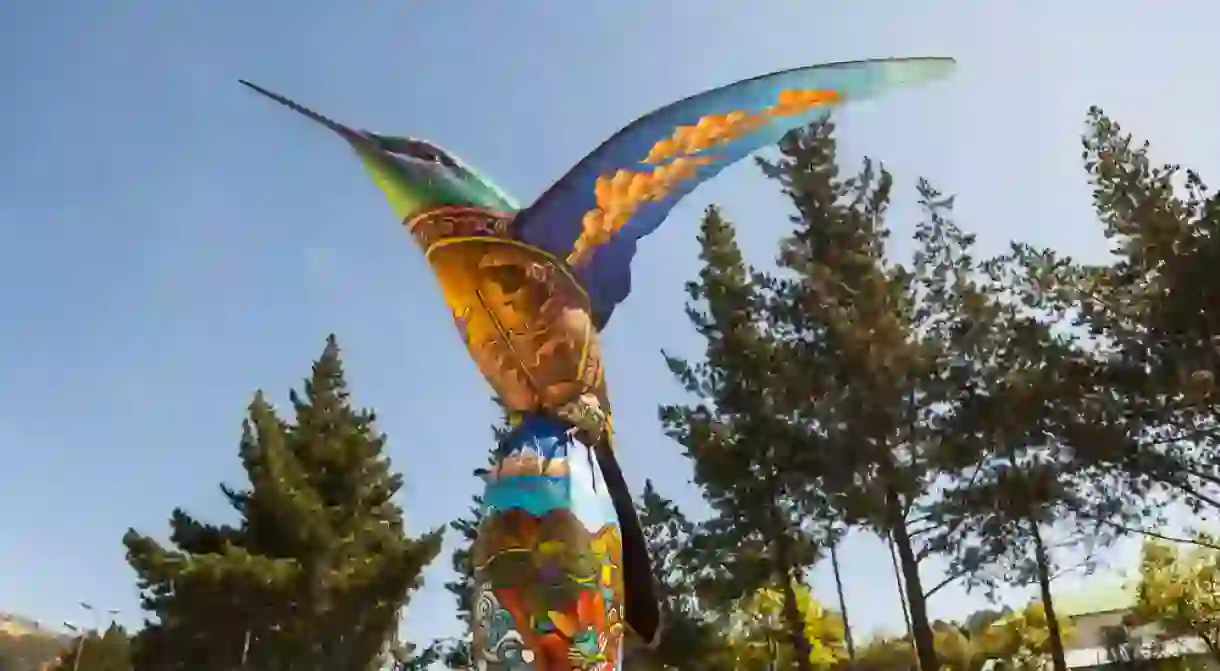6 Great Modern Art Venues in Quito Within Walking Distance of Each Other

For those in a mood for a one-day, meditative art crawl, Quito provides several wonderful modern art venues within a short distance of each other. Starting with Quito’s Casa de la Cultura, the municipal cultural center, visitors can appreciate the city’s modern art scene in one day, without feeling they need to rush. There are six venues, all within walking distance of each other that one can enjoy at a calm pace. Here’s our suggested “art crawl” in this creative corner of Quito.
The Casa de la Cultura
Building, Theater

The Casa de la Cultura, founded in 1944, and located at the intersection of Avenida de la Patria and 6 de Diciembre, has long been the center of Quito’s artistic development. It is made up of three prominent buildings, the largest a massive circular edifice that features galleries, theaters of varying sizes, movie salons, and museums. Right next to it is a more conventional, neo-classical rectangular building, and then an additional theater next to that, which also showcases art. The more classical building features two large exhibition halls with an ongoing series of expos, mostly by local artists. Afterwards, just walk over to the circular building that is a modern art space on the second floor (ask the helpful guards, “¿arte moderno?” if you get lost). This will lead you to the next venue on our list.
Museo de Arte Moderno
University

This too, is a showcase for what is new and cutting-edge in the modern arts. When you have had your fill, just walk over to Avenida de la Patria, then one block over to 12 de octubre, and on to the grounds of the Ecuador’s Pontifical Catholic University (Pontificia Universidad Católica del Ecuador), here you will find the next exhibitions space on our list.
Centro Cultural of the Pontificia Universidad Católica del Ecuador
Art Gallery, Music Venue

Just walk up Avenida de la Patria towards 12 de Octubre, and you will come upon the campus for Ecuador’s Pontificia Católica University, and with it, a modern, multi-story building known as the PUCE Cultural Center. Its stadium-sized exhibition first floor, and its additional exhibition spaces on the second and third floors routinely present cutting-edge painting and sculpture. The institution also collaborates with foreign embassies in showcasing work from Asia and Europe. Then from here, you can head back to 6 de Diciembre, walk (or take the streetcar) towards Avenida de Colon, and from there walk a few blocks towards Juan Leon Mera.
Ministerio de Cultura y Patrimonio

This Ministry of Culture and Patrimony is the main source of funding and support for the arts in Ecuador, and this is its administrative center. However, the place is not just a beehive for bureaucrats, but has an art space on the bottom floor, open to the general public, and like the Casa de la Cultura and the PUCE Cultural Center, it is free of charge. From here you can continue back to 6 de Diciembre, left towards Diego de Almagro, then another left on Juan Rodriguez, to reach our next gallery.
Eduardo Kingman Galeria

Along with Oswaldo Guayasamin and Camilo Egas, the late Eduardo Kingman was one of the most important and internationally recognized Ecuadorian artists of the 20th century. Famous for his “big hand,” expressionist portraits of ordinary, working-class citizens, the gallery is dedicated towards maintaining interest in his work as well as introducing it to new audiences. If you get back onto Diego de Almagro you can walk north several blocks to La Pradera.
FLACSO
School, University

FLACSO is a university, and the name is an acronym for Facultad Latinoamericana de Ciencias Sociales, the Ecuadorian chapter of an international educational organization created by UNESCO in 1957. The landscape and design of the Fernando Velasco Abad Park on the campus is an aesthetic accomplishment in and of itself. The university also features a large exhibition hall, open to the public and free of charge, showcasing avant-garde photography and painting.













